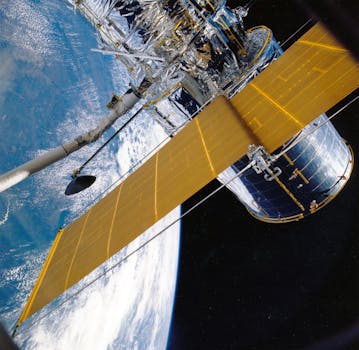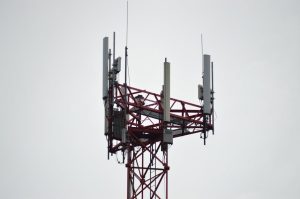From Space to Screens: The Role of Satellite Technology in Modern Communication

From Space to Screens: The Role of Satellite Technology in Modern Communication
Satellite Technology and Modern Communication
Satellite technology has come a long way since its inception, and its impact on modern communication has been profound. The use of satellites in communication has enabled global connectivity, facilitating the exchange of information across the globe. With the launch of the first commercial communications satellite, Intelsat 1, in 1965, the era of satellite-based communication began. Today, satellites play a vital role in modern communication, supporting a wide range of applications, including television broadcasting, telecommunications, navigation, and weather forecasting.
The role of satellite technology in modern communication is multifaceted. Satellites enable the transmission of data, voice, and video signals over long distances, connecting remote and underserved areas to the global network. They also provide a means of communication during natural disasters and emergencies, when traditional communication infrastructure is damaged or destroyed. Furthermore, satellites support the operation of global navigation systems, such as GPS, which rely on a network of satellites orbiting the Earth to provide location information and timing signals.
Applications of Satellite Technology
Satellite technology has a wide range of applications in modern communication. One of the most significant applications is in television broadcasting. Satellites enable the transmission of television signals to a wide audience, covering large geographic areas. This has enabled the global dissemination of news, entertainment, and educational content, promoting cultural exchange and understanding. Another significant application of satellite technology is in telecommunications. Satellites provide a means of communication for remote and underserved areas, where traditional communication infrastructure is lacking. They also support the operation of mobile networks, enabling mobile phone users to make calls and access data services.
Satellite technology also has applications in navigation and weather forecasting. The Global Positioning System (GPS) relies on a network of satellites orbiting the Earth to provide location information and timing signals. This has enabled the development of a wide range of navigation systems, including those used in aviation, maritime, and land transportation. Satellites also support the operation of weather forecasting systems, providing data on atmospheric and oceanic conditions. This enables meteorologists to predict weather patterns and issue warnings for severe weather events.
Impact of Satellite Technology on Society
The impact of satellite technology on society has been profound. It has enabled global connectivity, facilitating the exchange of information and ideas across the globe. This has promoted cultural exchange and understanding, supporting the development of a more interconnected and interdependent world. Satellite technology has also supported the development of a wide range of industries, including telecommunications, navigation, and weather forecasting. It has also enabled the provision of critical services, such as emergency response and disaster relief.
However, the impact of satellite technology on society is not without its challenges. The increasing reliance on satellites has created concerns about the risks of space debris and the impact of satellite launches on the environment. There are also concerns about the use of satellites for military purposes, including surveillance and communication. Furthermore, the high cost of satellite technology and the limited availability of satellite bandwidth have created challenges for the widespread adoption of satellite-based communication systems.
Conclusion
In conclusion, satellite technology plays a vital role in modern communication, supporting a wide range of applications and enabling global connectivity. Its impact on society has been profound, promoting cultural exchange and understanding, and supporting the development of a wide range of industries. However, the impact of satellite technology on society is not without its challenges, including concerns about space debris, environmental impact, and the high cost of satellite technology. As the demand for satellite-based communication systems continues to grow, it is essential to address these challenges and ensure that the benefits of satellite technology are available to all.
